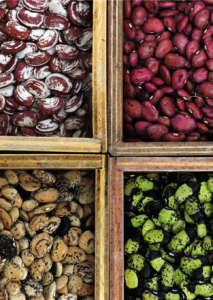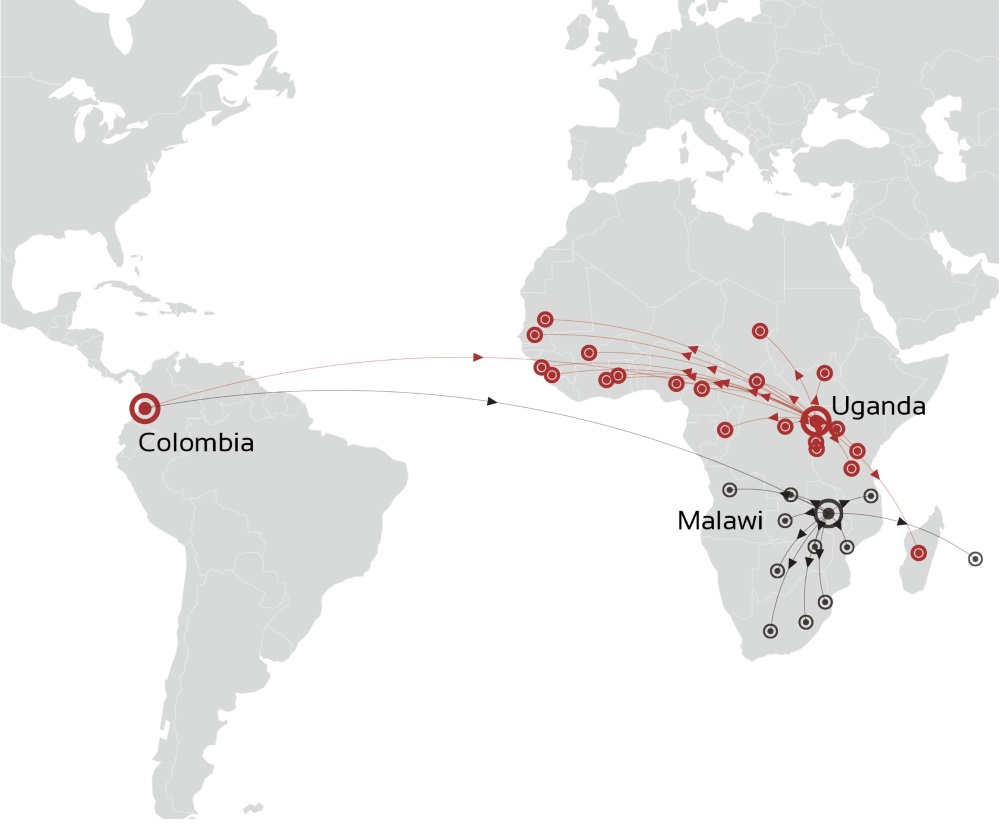Common beans evolved in often extreme environments. They offer important opportunities for breeders across Africa to breed beans in varied conditions – from humid highland environments, to near-arid environments with high temperatures and drought. The
Phaseolus genus has what it takes to confront problems that for years we thought to be intractable.
Dr. Steve Beebe, CIAT’s Bean Program Leader


PABRA’s bean breeding programs are closely integrated with CIAT’s program at its headquarters in Cali, Colombia, which
hosts the largest Phaseolus bean genebank in the world, containing over 37,000 bean types. Beans with high iron, resistance to diseases such as root rots, heat tolerance, drought tolerance, tolerance to soil problems, and insect resilience, are uniquely bred in Colombia, or made available to PABRA’s partners.
This represents huge potential: for example, using Phaseolus coccineus, the scarlet runner bean, researchers in Rwanda continue to
breed beans with even higher levels of acid soil tolerance of up to pH 4 – which could dramatically improve yields in environments in western Rwanda, northern Zambia, and other countries.
Beans stored in the genebank show potential for unique disease resistance that has not yet been tapped in Africa. Reports suggest that some bean species may carry resistance to the most destructive pest of bean in Africa – bean stem maggot. If beans resilient to bean stem maggot could be released in Africa, that would be a major step forward, making beans more profitable for farmers.


